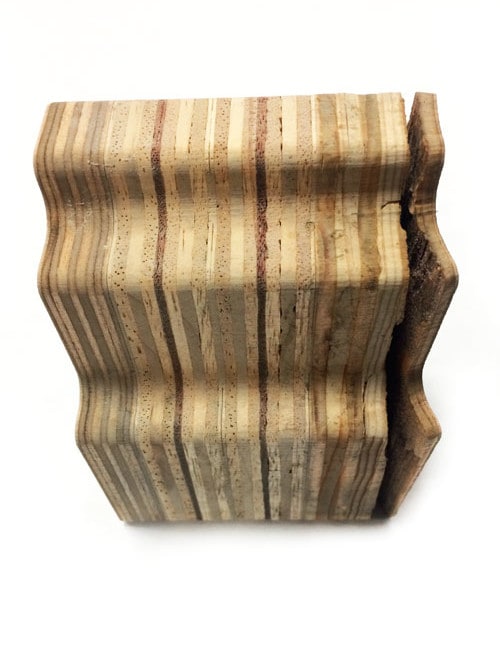Water jet cutting works great for most materials. Some pitfalls of water jet cutting are most evident when cutting cellular materials, which naturally have variation in density. Plywood has this characteristic. Due to the nature of water jet cutting, delamination and jet washout can occur. When the water jet starts a profile cut, it must first pierce all the way through the material and then proceed with the cut. Jet washout can occur during this initial chiseling out of the material. If the jet stream reaches a harder part of the plywood and there is a weaker point adjacent, it will travel down that path before getting back on track. When this happens, the water weasels into cracks washing out the glue in plywood resulting in lifts and cracks. Delamination can also occur when cutting plywood, and this is caused by an errand jet stream water path eroding the glue between plywood boards.
When cutting plywood, minimizing delamination and jet washout can be done with some foresight. First, thinner plywood cuts with cleaner cuts. Secondly, providing extra lead in room for the jet stream between cuts helps reduce delamination. When the water jet starts a profile cut, it must first pierce all the way through the material and then proceed with the cut. When provided with extra material between cuts, the jet stream can pierce away from the cut lines, and then lead in, resulting in a much cleaner cut. For this reason, cutting things like bolt holes, which are tight and small, can cause jet washout.

